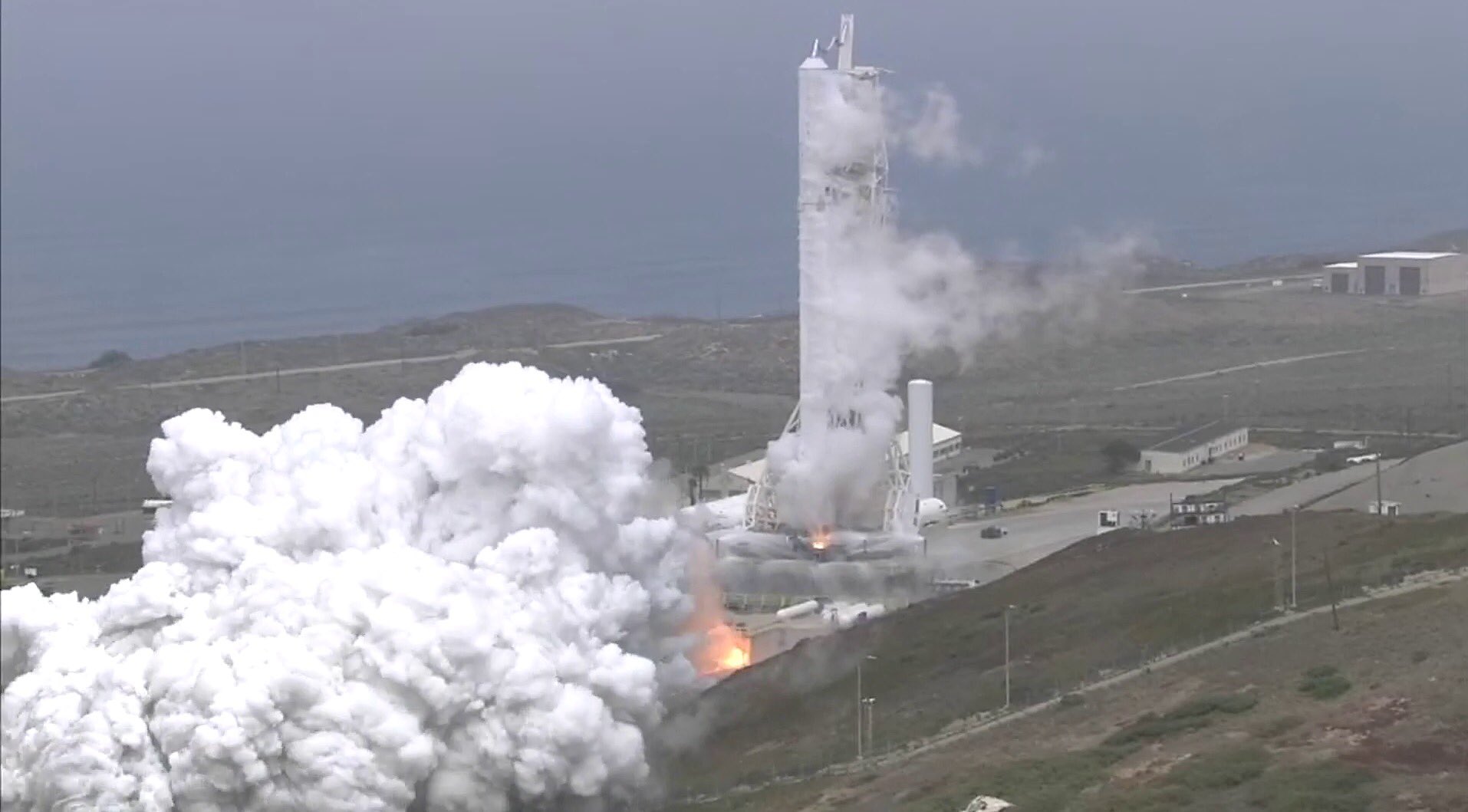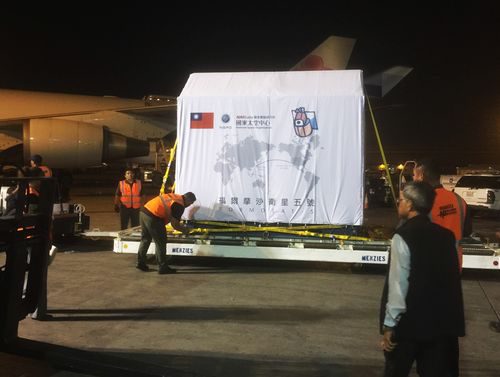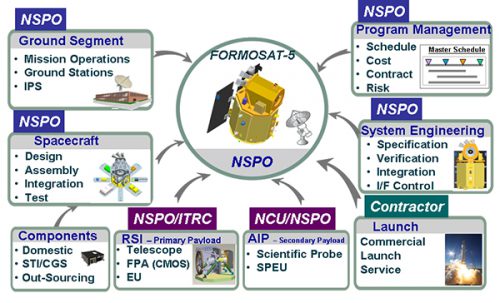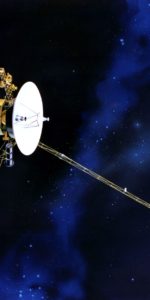
Taiwan’s first fully home-grown satellite, Formosat-5, will hitch a ride to orbit on Thursday, 24 August, as SpaceX ratchets its flight rate back up after a summer of infrastructure upgrades and maintenance on the East and West Coasts of the United States. Launch of the 12th Upgraded Falcon 9 of the year is targeted to occur from Space Launch Complex (SLC)-4E at Vandenberg Air Force Base, Calif., during a 44-minute “window”, which opens at 11:50 a.m. PDT. It will mark SpaceX’s fifth flight out of mountain-ringed Vandenberg and its third in 2017 alone, coming on the heels of two batches of Iridium NEXT communications satellites, the first in January and more recently in late June.
Although much of SpaceX’s launch fever in recent months has focused on historic Pad 39A at the Kennedy Space Center (KSC) in Florida—which it leased from NASA on a 20-year contract, back in April 2014—Vandenberg has played a somewhat quieter role. It first supported the maiden launch of the Falcon 9 v1.1, way back in September 2013, which transported Canada’s CASSIOPE scientific satellite to orbit. More recently, Vandy’s SLC-4E saw the departure of the Jason-3 ocean altimetry mission for NASA in January 2016, then went on to pull double-duty this year by lofting 20 Iridium NEXT satellites on two flights. With the completion of Thursday’s mission, it is expected that SLC-4E will play host to another ten-strong payload of Iridium NEXT satellites in late September.
In readiness for Formosat-5, the Upgraded Falcon 9 was transported to SLC-4E late last week and underwent a customary Static Fire Test of the nine Merlin 1D+ engines of its first stage on Saturday. Following the test, it was returned to a horizontal configuration and Formosat-5 itself—encapsulated within its bullet-like payload fairing—was installed. This has become a standard procedure, following last September’s on-the-pad explosion of the Amos-6 mission. With the integration of Formosat-5, the 230-foot-tall (70-meter) booster was then due to be returned to SLC-4E and raised to a vertical orientation, ready for Thursday’s opening launch attempt.

“We are proud to provide a safe and secure launch location for our mission partners,” said Col. Gregory E. Wood, vice-commander of the 30th Space Wing at Vandenberg, who serves as Launch Safety Authority for Thursday’s launch. “This mission is the practical demonstration of the professional spirit and teamwork found in the everyday operations of Team Vandenberg and SpaceX.”
Originally known as “Republic of China Satellite” (ROCSAT), but renamed “Formosat” in 2004, the program has seen a series of missions launched to fulfil a number of scientific and technological objectives. The TRW-built ROCSAT-1/Formosat-1 was launched in January 1999, and carried a payload of three instruments to conduct ocean imaging, experimental space communications and solar-terrestrial physics research. Next came the Astrium-built ROCSAT-2/Formosat-2, launched in May 2004, which focused on regional remote sensing applications, including natural disaster relief, agricultural and urban planning strategy and environmental monitoring. This satellite continued to return data for more than 12 years, before being decommissioned in 2016. More recently, the Orbital Sciences Corp.-built ROCSAT-3/Formosat-3—also known as the Constellation Observing System for Meteorology, Ionosphere and Climate (COSMIC)—rose from Earth in April 2006, laden with six microsatellites for a range of tasks, including weather forecasting, ionosopheric, climate and gravity research.
Formosat-5 has been under development by the National Space Organisation (NSPO) of Taiwan since 2005. Unlike its predecessors, it has been wholly designed, built and integrated by NSPO, and as such its core engineering priorities have included the development of the satellite itself, together with its avionics, flight software and control algorithms. The program passed Preliminary Design Review in December 2010, then entered its Assembly, Integration and Test phase. Sailing through its Critical Design Review in January 2013, the final integration of the satellite was completed in March 2015. Formosat-5 was then put through a grueling series of thermal vacuum chamber runs and end-to-end systems tests.
Against this backdrop of progress, the mission had met with much delay. NSPO had bid for a launch provider in October 2008 and in mid-2010 SpaceX was selected, with an expectation that Formosat-5 would ride atop a Falcon 1e booster. However, the 1e—an upgraded version of SpaceX’s first-generation Falcon 1—was later canceled and the payload shifted onto the larger and more powerful Falcon 9. Hardware delays pushed the mission into the 2014-2015 timeframe, allowing an opportunity for SpaceX to co-manifest another payload alongside the relatively lightweight Formosat-5. That payload eventually found another berth aboard an Indian launcher, leaving Formosat-5 to fly alone.
“Riding solo, Formosat-5 will be the lightest payload launched by Falcon 9,” noted Spaceflight101 in a recent article. “The vehicle’s potential performance numbers illustrate the colossal waste of rocket performance.” All told, Formosat-5 weighs only 1,050 pounds (475 kg). It was highlighted by Spaceflight101 that the Upgraded Falcon 9 could deliver a payload of up to 17,400 pounds (7,900 kg) to Formosat-5’s orbit and still have enough propellant in reserve to return to land on solid ground at its launch site. Equally, it could deliver a payload of up to 24,150 pounds (10,955 kg) and have enough fuel left over to return to land on the Autonomous Spaceport Drone Ship (ASDS).

Following ground tests, Formosat-5 was flown via China Airlines transport aircraft to Los Angeles International Airport, touching down in the United States on 19 July 2017. A day later, the spacecraft was transported to Vandenberg for fueling and pre-flight operations. Following last year’s decommissioning of Formosat-2, it is expected that Formosat-5 will provide follow-on services. After deployment from the second stage of the Upgraded Falcon 9, it will be delivered into a Sun-synchronous orbit at an altitude of 450 miles (720 km).
During the course of its minimum five-year mission, the three-axis-stabilized spacecraft will employ a Remote Sensing Instrument (RSI) and a battery of other tools to provide 6.6-foot (2-meter) panchromatic and 13-foot (4-meter) multi-spectral Earth imagery. Additionally, it will support state-of-the-art ionospheric data-gathering. Formosat-5 is octagonal in shape, measuring 10 feet (3 meters) tall and 4 feet (1.2 meters) in diameter, and represents the first spacecraft of its type to be entirely developed and built by NSPO. As such, its core priorities—aside from its scientific agenda—have included the development of the satellite platform itself, including avionics, flight software and control algorithms.
In readiness for Thursday’s launch, SpaceX teams will press ahead with fueling the Upgraded Falcon 9 with a highly refined form of rocket-grade kerosene (known as “RP-1”) and liquid oxygen. Assuming that no slips are sustained, the terminal countdown autosequencer will be initiated at 11:40 a.m. PDT, as the clock passes T-10 minutes. The nine Merlin 1D+ first-stage engines, arranged in a circle of eight, with a ninth at the center, will be chilled, ahead of ignition. The booster will enter “Startup” at T-60 seconds, assuming primary control of all critical functions.
The nine Merlins will ignite at T-3 seconds, ramping up to a combined impulse of 1.5 million pounds (680,000 kg). At zero, the Upgraded Falcon 9 will be released from the SLC-4E pad surface and will commence its climb into orbit. In spite of the lightweight nature of the Formosat-5 payload, SpaceX has opted for an oceanic touchdown of the first stage on the Autonomous Spaceport Drone Ship (ASDS) “Just Read the Instructions”, in the Pacific Ocean.
“With regards to the drone ship,” SpaceX’s John Taylor told AmericaSpace, “we are using that because we don’t have approvals to conduct a land landing just yet.” If it works, this will be the third time that a returning Upgraded Falcon 9 core has alighted on JRTI and will represent the ninth overall successful landing of SpaceX hardware on either the East or West Coast drone ships since April 2016.
Be sure to “LIKE” AmericaSpace on Facebook and follow us on Instagram & Twitter!
Missions » Commercial Space » Formosat »




